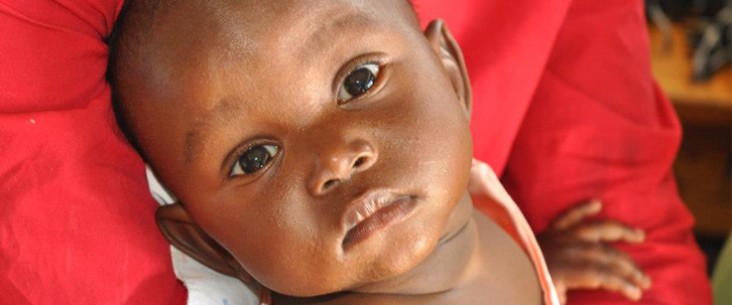- What We Do
- Agriculture and Food Security
- Democracy, Human Rights and Governance
- Economic Growth and Trade
- Education
- Ending Extreme Poverty
- Environment and Global Climate Change
- Gender Equality and Women's Empowerment
- Global Health
- Water and Sanitation
- Working in Crises and Conflict
- U.S. Global Development Lab
Enhancing Provision and Use of Maternal Health Services through Financial Incentives
April 24–25, 2012, Washington, DC

When the promise of life is not enough ….the way forward for evidence-based use of financial incentives in maternal health.
Over a lifetime, women are more than 100 times likely to die as a result of pregnancy in sub-Saharan Africa than in high income countries of the world.¹ Great disparities exist in other parts of the world as well. These enormous discrepancies highlight vast inequity as well as the possibility of greatly lowering preventable maternal mortality. Women in low- and middle-income countries (LMIC) with a high burden of maternal deaths often underutilize the maternal health services intended to facilitate healthy births, save maternal lives, and protect young children. In Bangladesh, the “cumulative probability of survival to age 10 years was 24 percent in children whose mothers died before their tenth birthday, compared with 89 percent in those whose mothers remained alive."² When the promise of a healthy newborn or life itself is not enough to motivate women to use maternal health services, what can be done? Creating demand and supply for quality lifesaving services is a challenge shared across many areas of global health, but it is particularly compelling in maternal health given the high mortality rates for mothers and the children they leave behind.
LIMICs and donors have turned to financial incentives as a solution. Can financial incentives significantly and sustainably increase provision and use of quality maternal health services? Recent systematic reviews regarding the effectiveness of financial incentives for changes in both supply and demand aspects of health are mixed and do not specifically address maternal health. Countries need an improved understanding of financial incentives for the complex set of maternal health services that include outpatient and inpatient care, unpredictability of birth timing, and pregnancy complications. Recognizing the need for evidence based practice, policies, and a focused research agenda, the U.S. Government convened Evidence Summit on Enhancing Provision and Use of Maternal Health Services through Financial Incentives on April 24 and 25, 2012, in Washington, DC. Multisector experts, including economists and maternal health specialists from the academic and development communities, as well as government officials from throughout the world examined the evidence on whether financial mechanisms impact maternal and neonatal health outcomes, behaviors, and services and will explore the contextual issues that mitigate or facilitate impact.
Anticipated outcomes of the evidence summit and post-summit activity include preparation of manuscripts for publication and initial policy and practice recommendations for LMIC governments and donors. Perhaps equally important, the evidence summit will inform a unified research agenda which creates a community of practice linking the maternal-health and economics communities to advance the evidence base together for sustainable effective use of financial incentives. Bridging the economic and maternal health communities will ensure optimal updated maternal health practices and validated endpoints for rigorous impact evaluation. The World Bank's commendable work to systematically harmonize impact evaluations within its results-based financing network through its recently published impact evaluation toolkit will be shared with U.S. Government, LMICs, and other countries to enable rigorous, comparable data. Going forward, learning will be shared across the world, with governments, donors, and others through a multisectoral community of practice with additional coordination at the country level.
Evidence Summit Resources
- Agenda [PDF, 287KB]
- Concept Paper [PDF, 640KB]
- Literature Search and Screening Process [PDF, 451 KB]
- Interagency Core Planning Group [PDF, 146KB]
- List of Summit Participants [PDF, 171KB]
- Evidence Acquisition and Evaluation for U.S. Government Evidence Summit on Enhancing Provision and Use of Maternal Health Services through Financial Incentives [PDF, 728KB]
Additional Resources
-
World Bank Impact Evaluation Toolkit
This toolkit offers a step-by-step guide on how to evaluate the impact of interventions, especially those related to maternal and child health and those involving results-based financing. It can also be easily adapted for impact evaluation in other fields. - Journal of Health, Population and Nutrition Supplement - Investigating Financial Incentives for Maternal Health
1 WHO, UNICEF, UNFPA, The World Bank. Trends in Maternal Mortality: 1990 to 2008, 2010.
2 Carine Ronsmans, Mahbub E Chowdhury, Sushil K Dasgupta, Anisuddin Ahmed, Marge Koblinsky. Effect of parent’s death on child survival in rural Bangladesh: a cohort study. Lancet. Vol. 375, June 6, 2010.







Comment
Make a general inquiry or suggest an improvement.